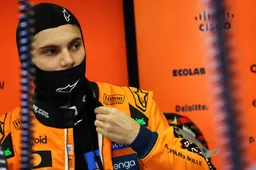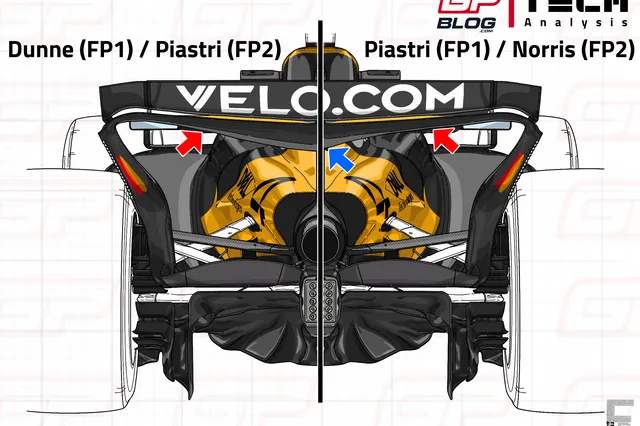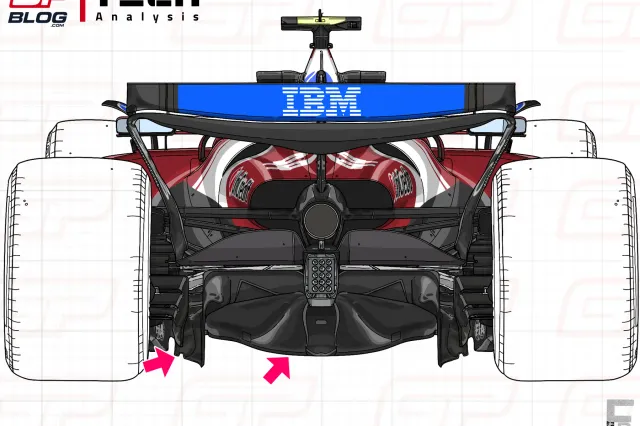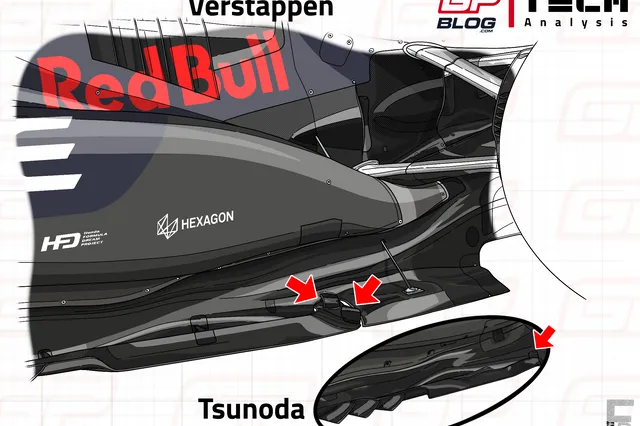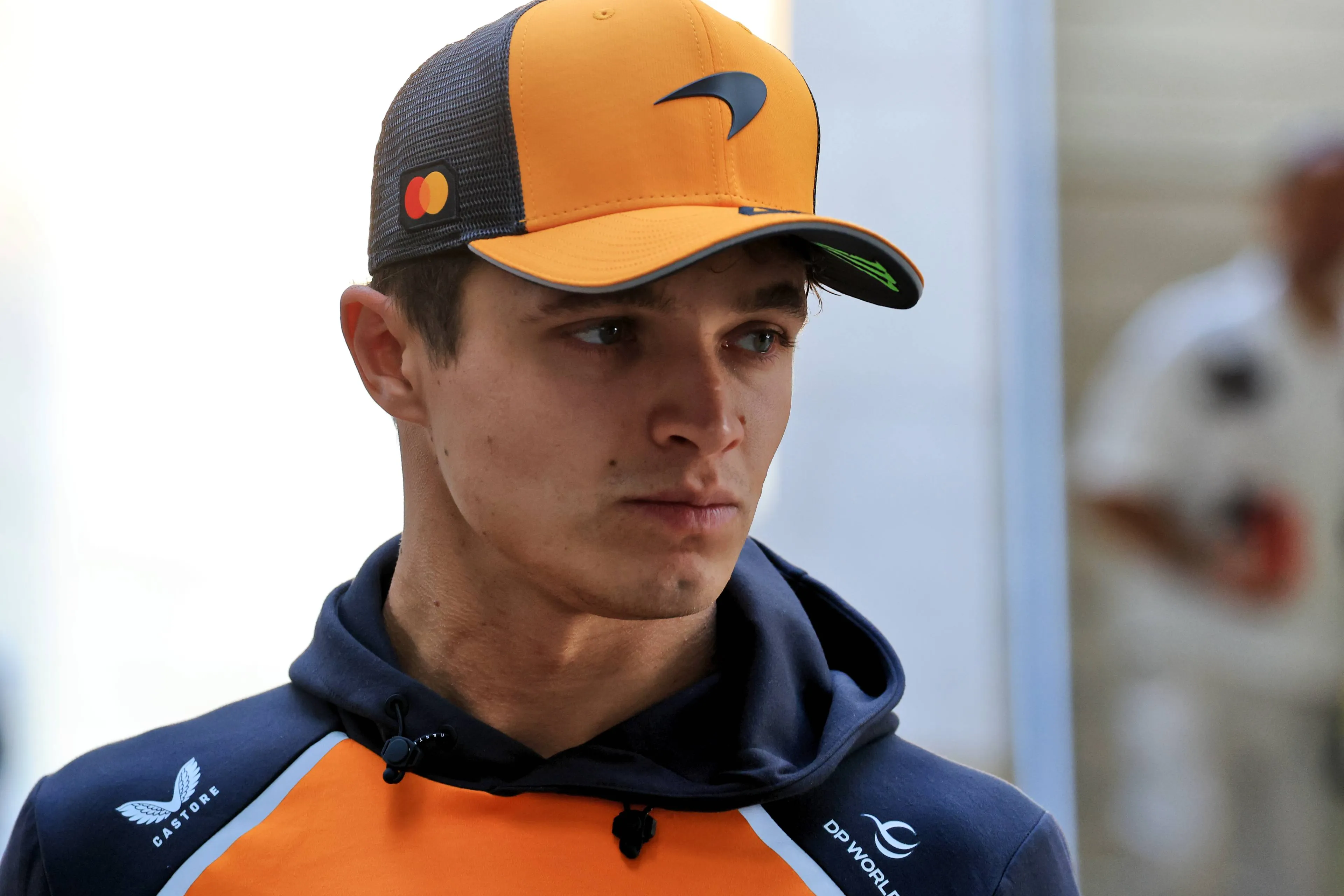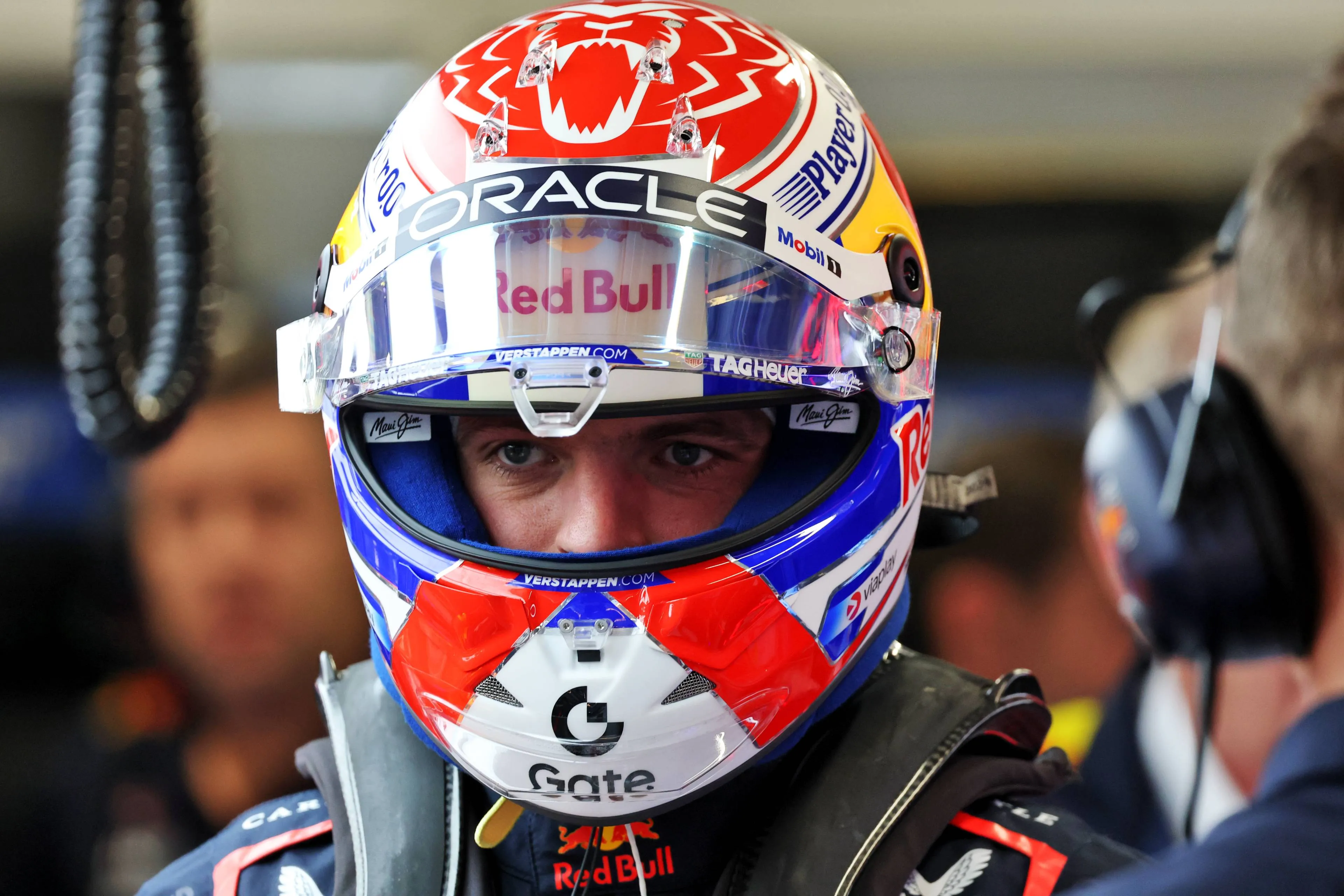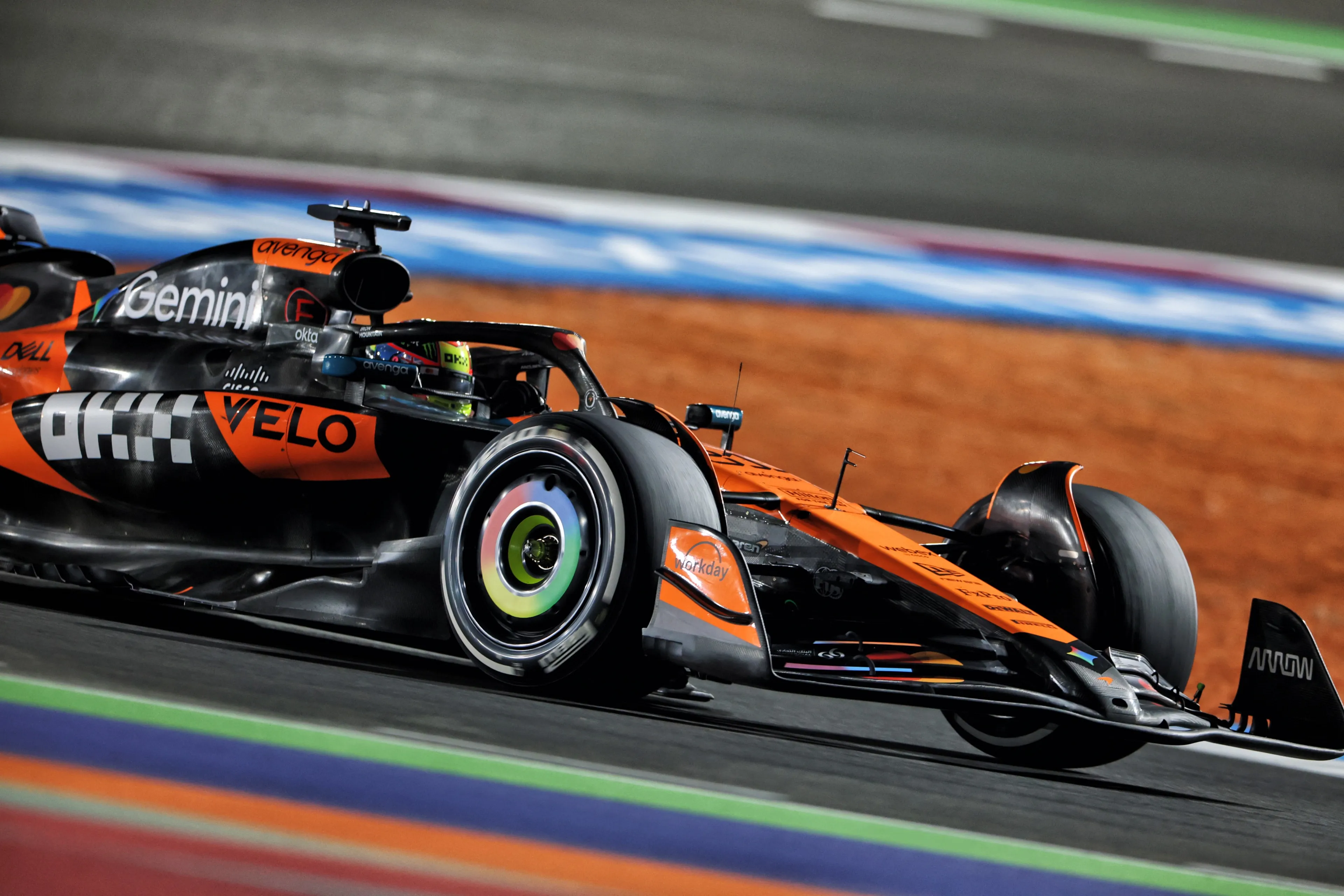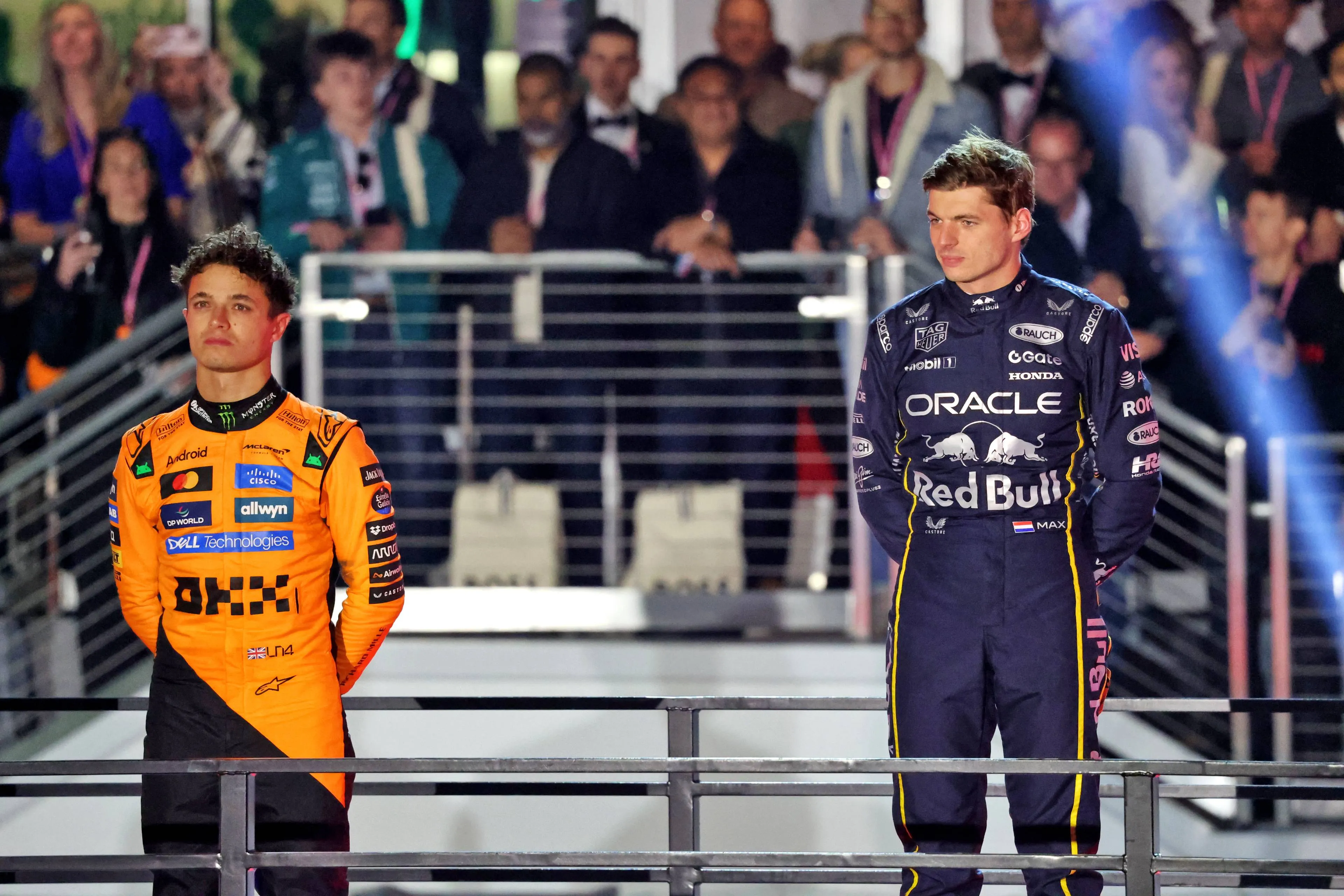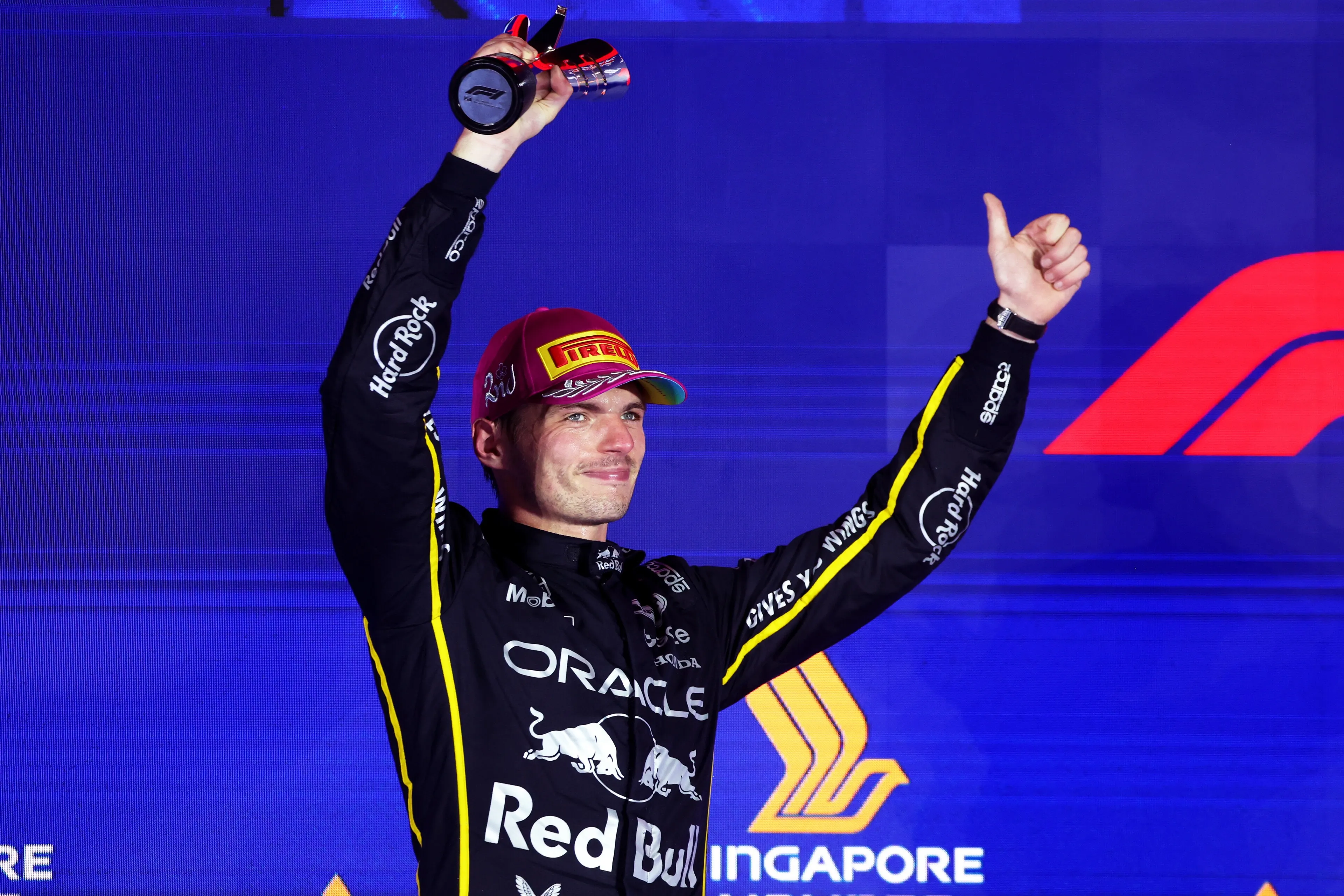F1 Tech | Why the SF-25 still has a narrow working window despite upgrades
During the British Grand Prix weekend, Ferrari was able to be very close to McLaren in dry conditions, but the scenario completely changed as soon as rain fell on Sunday. The SF-25 has improved thanks to the new floor introduced in Austria, but the performance shown on a wet track proves that there’s still a lot of work to do to catch up. Let’s try to explain why.
After having introduced a completely new floor during the Austrian Grand Prix weekend, the Scuderia arrived at Silverstone confident that the new components would have helped them extract even more performance from the SF-25, which fitted well to the high-speed nature of the English Circuit.
A completely new floor for Ferrari in Austria
The new floor, which has been described as the first step to correct SF-25 weaknesses, included changes in all the different areas: floor fences, floor edge wing and smaller changes to the diffuser.
Starting from the floor fences, changes are visible both to the inner fences and to the outer floor edge: as highlighted in the drawing below, the two central bulkheads have been completely redesigned. The left-hand fence is smaller, has a much more curved shape and is extended forward more than the previous version, which instead had a more triangular and pointed shape (yellow arrow). The right-hand fence, however, has retained the same shape but is now more inclined than the previous version (red line and arrow).
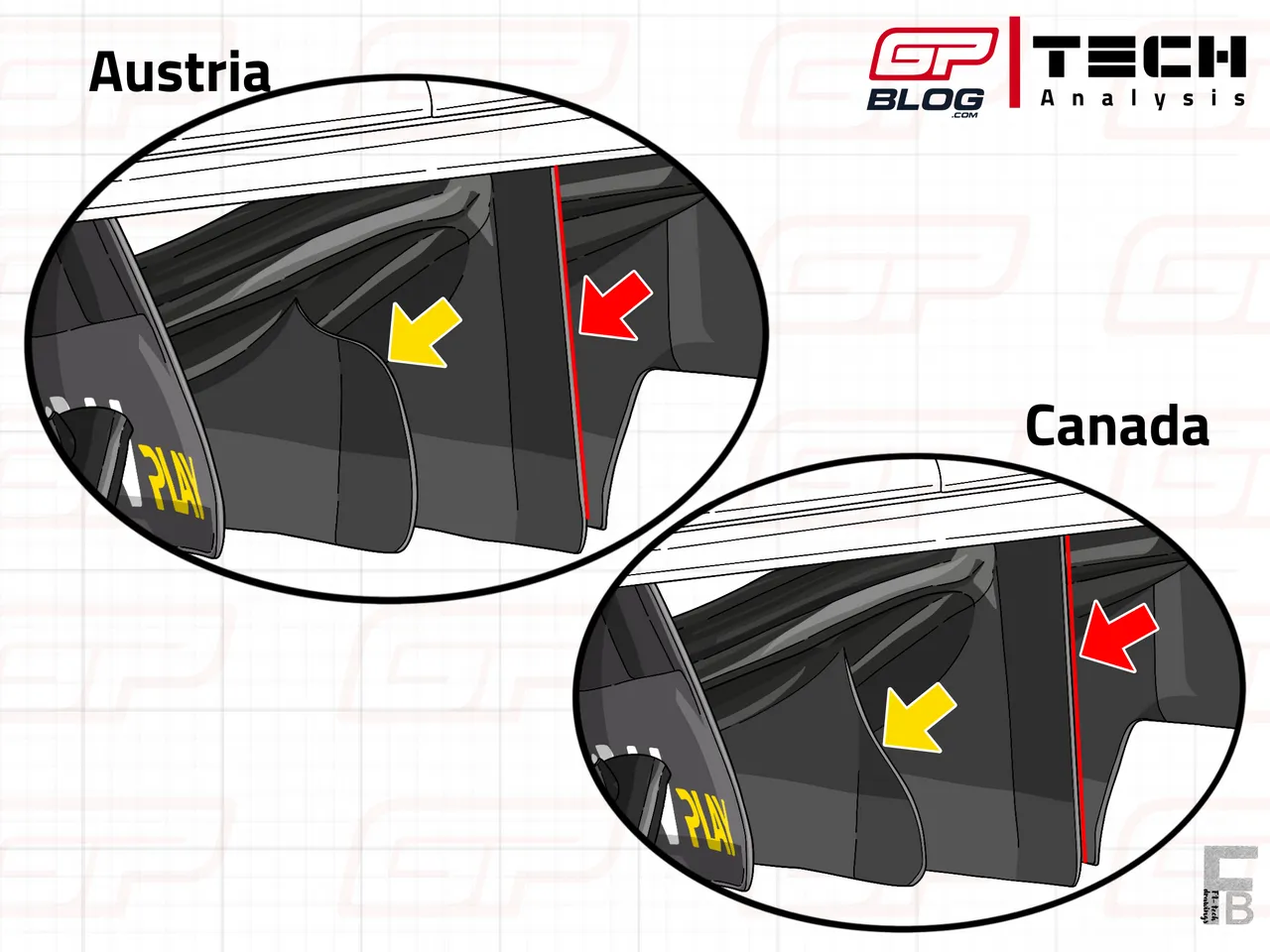
For what concerns the outer floor fence, the new version features a different connection to the main floor: as highlighted by the light blue line and arrow, there’s a proper winglet that connects the top portion of the floor fence to the floor, consequently pushing the air outwards. The old version featured two deep, sharp fins that connected the outer fence to the floor and also generated vortices.
The main goal of this design is to generate a higher pressure area at that front section of the floor with the new floor fences, in order to push the front tyre turbulence towards the outside, preventing it from being sucked under the floor. At the same time, the new outer floor fence connection helps producing a vortex to keep the flow attached in that area.
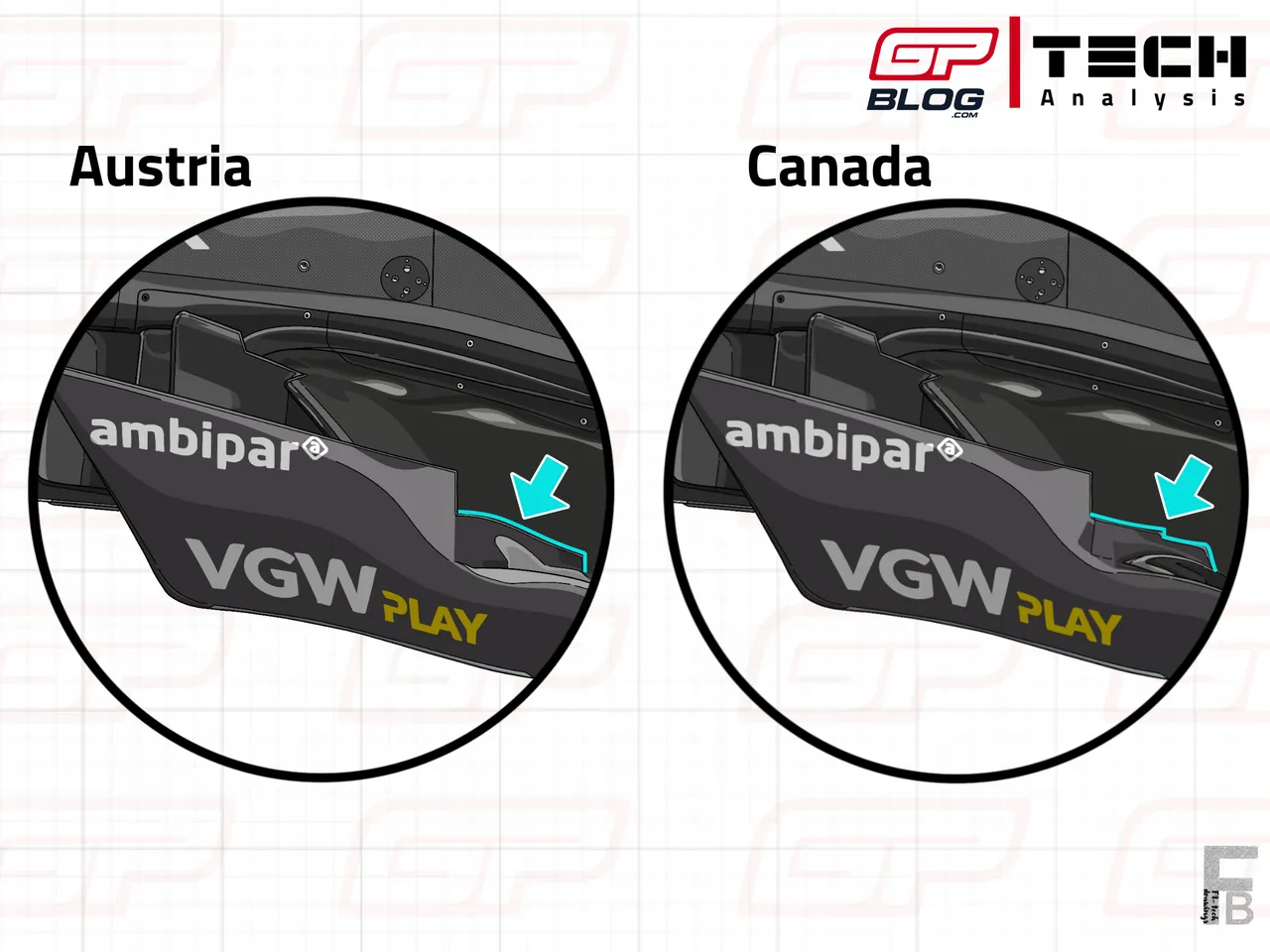
For what concerns the floor edge wing, many small but visible changes have been made, to make the component work with the changes just described: as show in the drawing below, the metal support that connects the floor to the floor edge wing has changed and is now similar to a small winglet, while the old version had a “hook” shape (pink arrow).
Moreover, the upper lip of the raised section now connects differently to the long carbon “knife”: as shown by the light blue arrows, the curve of the upper lip has a softer trend compared to the previous version, which had a steeper and linear trend. The distance between the last vortex generator and the beginning of the “knife” itself has also been shorted, to improve the vortices dimensions and better seal off the floor at different ride heights.
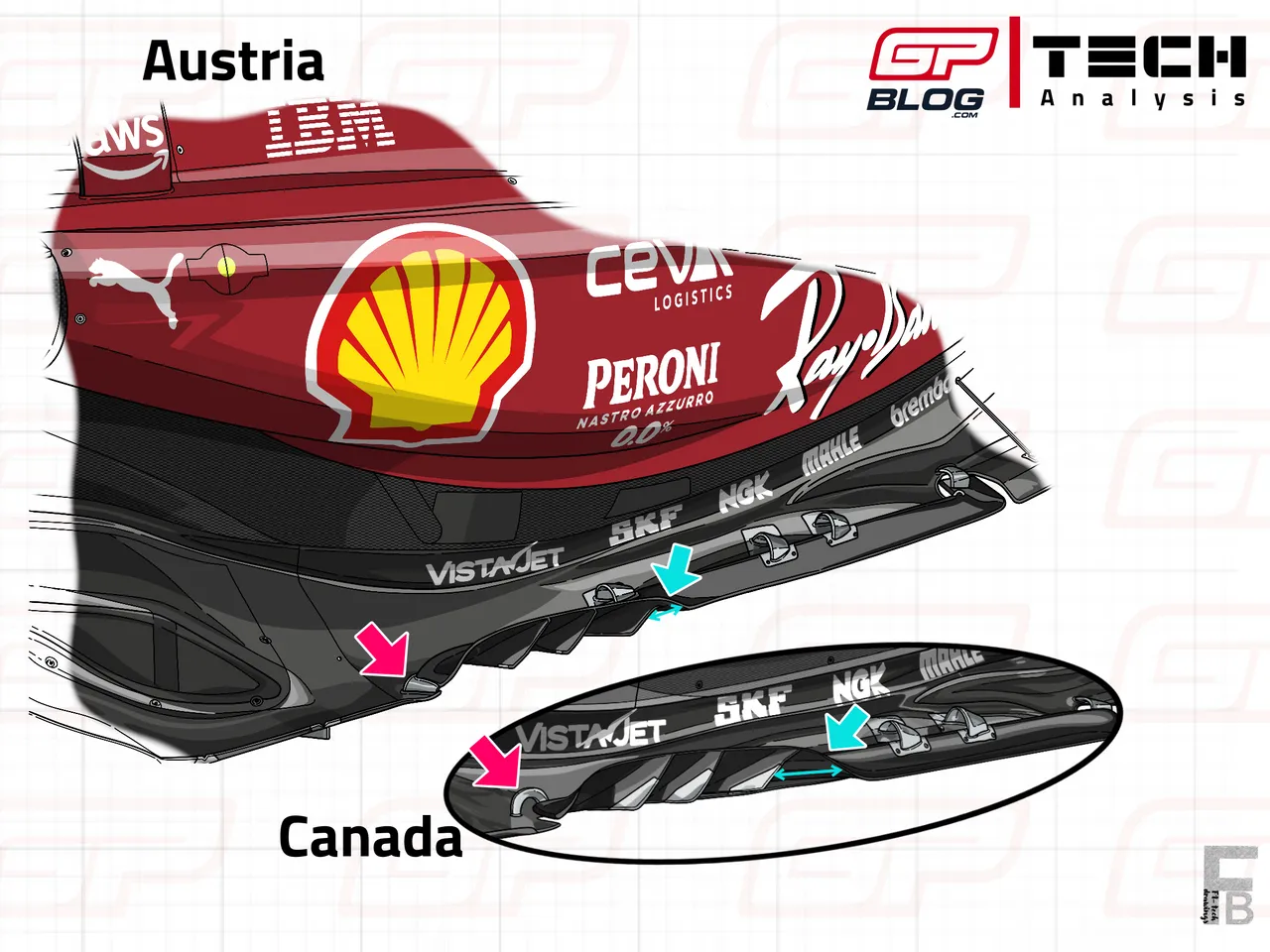
This new floor was mainly designed to work better at different ride heights, thus making the car more versatile. Moreover, it was also designed to widen the SF-25’s working window, making the car easier to drive for Leclerc and Hamilton without needing extreme set-ups.
The step forward seemed clear, as confirmed by Deputy Team Principal Jerome D’Ambrosio on Friday in Silverstone: “Well, what we brought to, as I said, in Austria, I think what we brought there delivered what was expected. So a bit more downforce and a bit more performance."
A very positive performance on Friday at Silverstone
After the positive results seen in Austria, with Leclerc and Hamilton finishing P3 and P4 respectively, mainly thanks to a good performance in qualifying and a good race pace, it was clear that the new floor was a first step towards a positive direction.
Friday at Silverstone confirmed the positive impressions: the Scuderia, as it was the case in Austria, decided to fit on both Hamilton and Leclerc’s cars the usual medium downforce rear wing with the DRS flap trimmed on the trailing edge, to slightly reduce drag and increase the top speed (yellow arrow and line), as shown in the drawing below. A visible change also appeared on the corner of the diffuser roof, where the trailing edge was made thicker to better manage the flow extraction at the rear end of the car (green arrow).
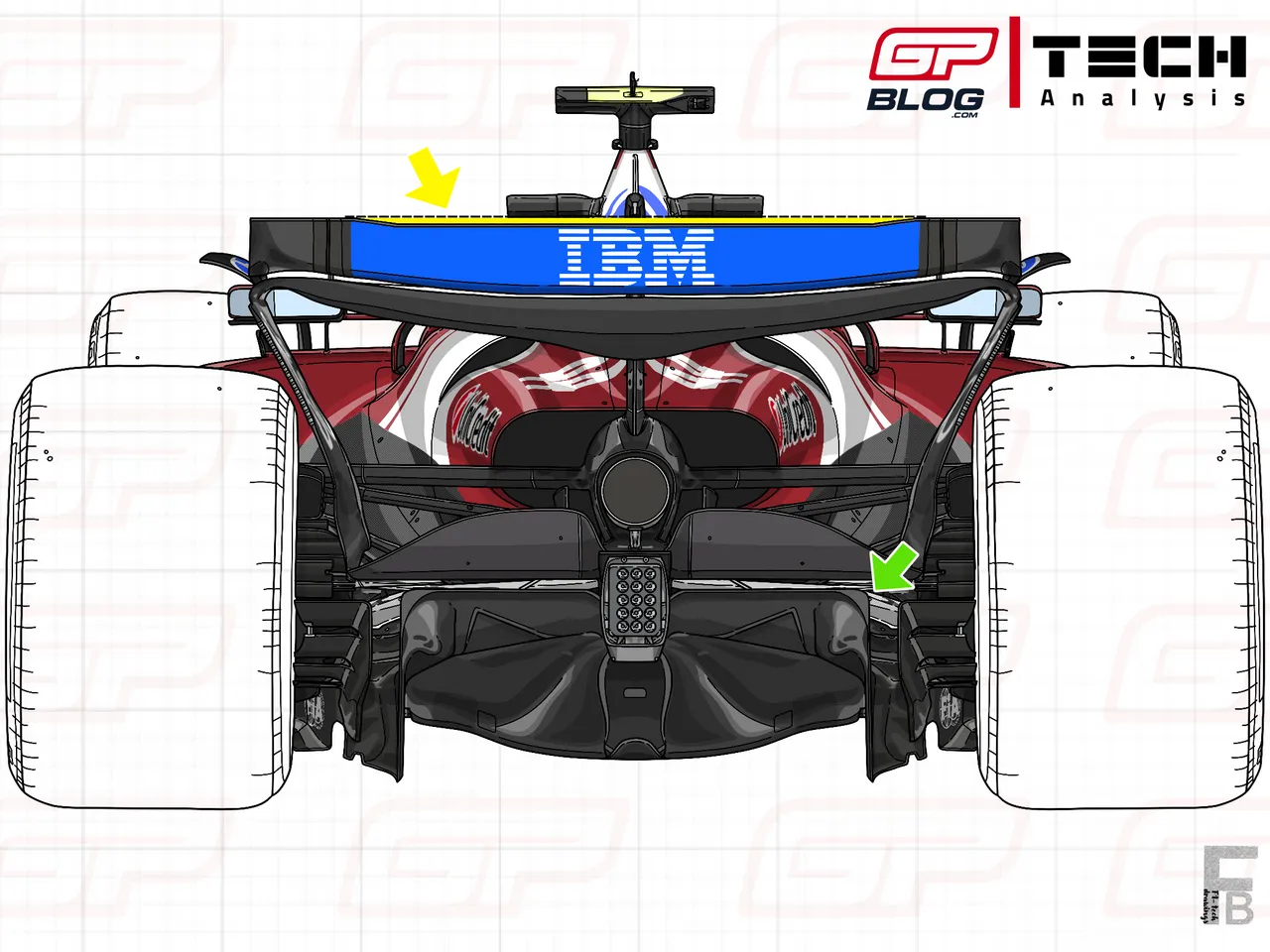
This rear wing choice, together with the very low ride height chosen by Ferrari engineers (thanks to the very smooth Silverstone asphalt) and the sunny weather, made the SF-25 extremely quick on Friday: Hamilton was able to set the quickest time in FP1 and in FP2 the two Ferrari drivers were in P2 and P3, proof of one of the best Fridays so far for the Italian team.
The SF-25, in fact, looked particularly strong through the high speed, like Magots and Becketts and through Stowe, proving that the little additional downforce generated by the new floor was fresh sap for the car’s performance.
The SF-25 was sunk by the rain on Sunday
The performance in qualifying was more disappointing, with Hamilton in P5 and Leclerc in P6, even though the gaps were quite close between all cars (Hamilton’s lap was 0.203 seconds slower than Verstappen’s).
However, after qualifying, Hamilton explained the main limitations of the car during the day:
"At the end, we've got a bit of low-speed understeer, which is something that is inherent with this car. And I think it's really, we're over-driving to get that extra bit of time."
"We're at an actual pure pace, I don't think the car is as quick, naturally, as the car is. So we're probably having to go a little bit too far, which then makes it is where the car is super peaky. So we need a little bit more performance to come from."
These words were proof that Ferrari engineers adopted quite an extreme set-up on the car to make it competitive in dry conditions, but consequently the car was difficult to drive at the very limit, as happened in qualifying.
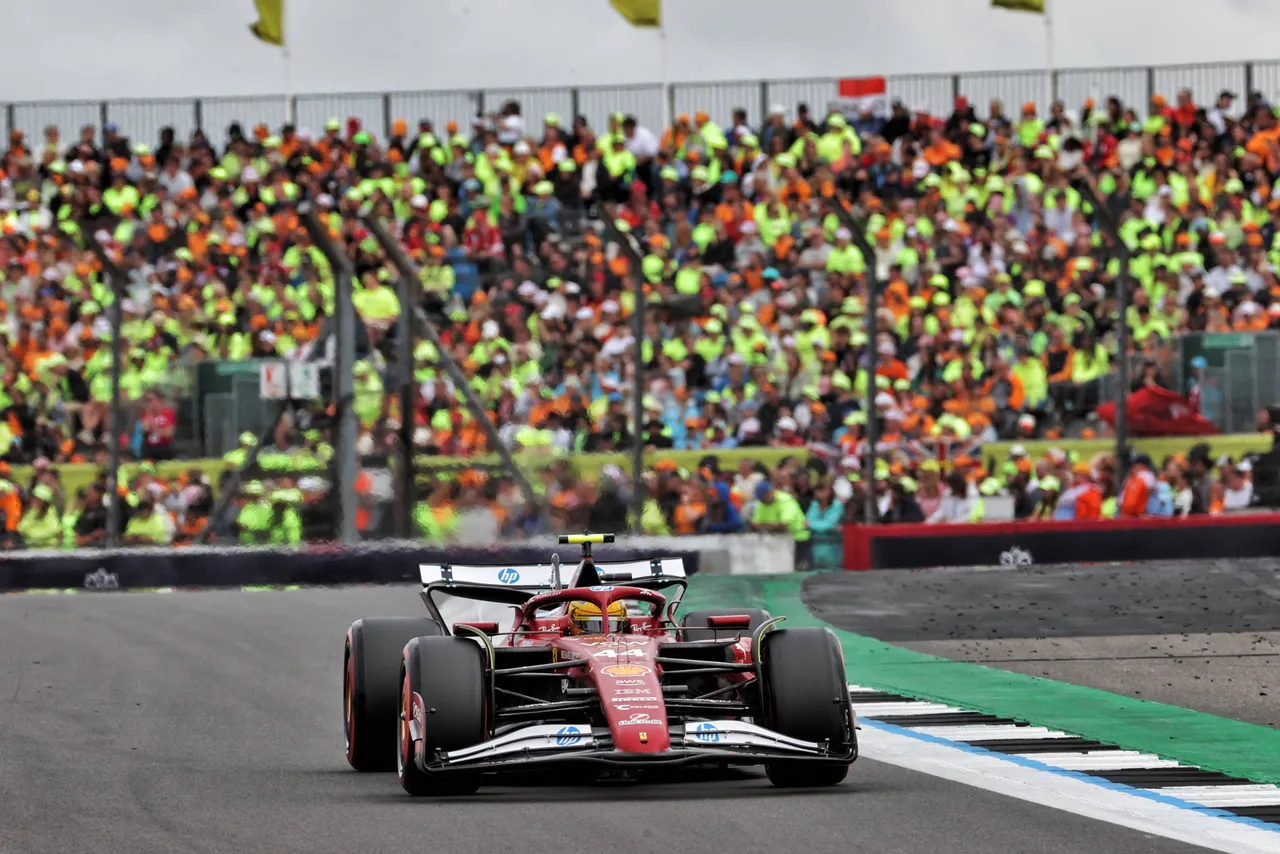
As explained by Hamilton, in fact, to make the car competitive, they chose an oversteering set-up for high speed corners, which however made it quite difficult to drive in the slow speed. For this reason, the car is still too ‘peaky’, meaning that it behaves very differently based on how the conditions vary and on different set-ups adopted.
This balance limitation was then exaggerated by the rain on Sunday: generally speaking, in fact, rain exploits balanced cars with a good level of downforce generated by the bodywork and Venturi channels. As a consequence, the pointy set-up chosen by Ferrari engineers turned out to be less than ideal in the rain, as the SF-25 showed extreme oversteer in all high speed corners and understeer at slow speed.
It’s clear that the new floor brought some improvements in terms of aerodynamic balance, but there’s still steps that need to be made from the mechanical side. The set-up issues just described were the main cause of Ferrari’s disappointing race, but were matched to the poor strategies decisions especially on Leclerc’s side of the garage.

This said, the three weeks remaining before the summer break will be crucial for Ferrari, as they are set to introduce a new rear suspension for the Belgian Grand Prix, that should solve the lack of mechanical grip on the rear axle, a huge limitation for the SF-25 during this first half of the season.
If Ferrari engineers are able to set it up correctly and unlock even more potential, then the team will probably be able to keep the second place in the Constructors’ Championship, still a big chunk of points behind McLaren.
Read also
Popular on GPBlog

Aston Martin has informed staff following rumors about Horner’s arrival

Marko identifies Verstappen's problem during Sprint Qualifying

This is the provisional grid for the F1 Qatar GP sprint race
